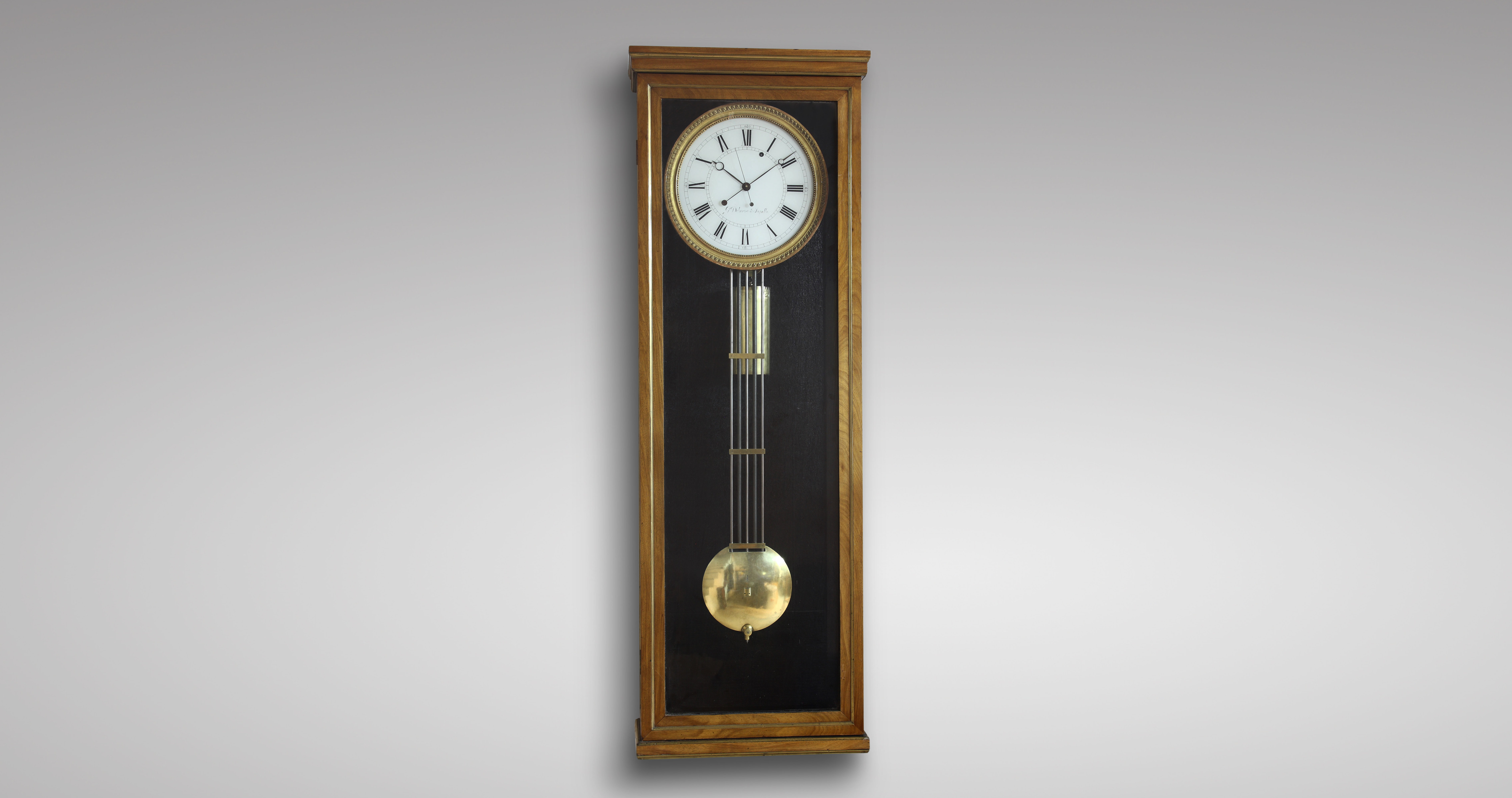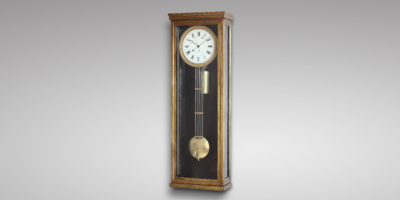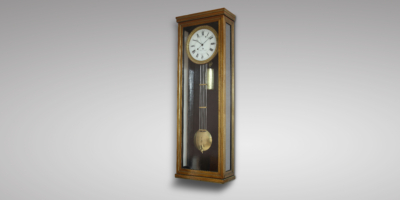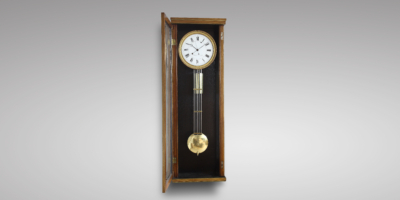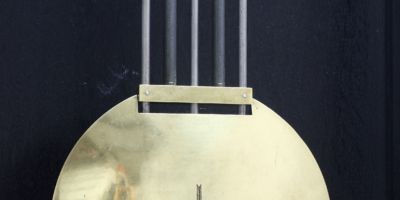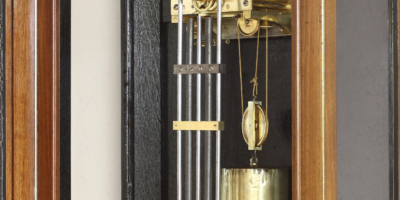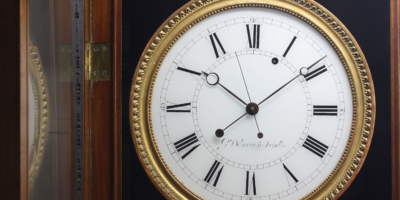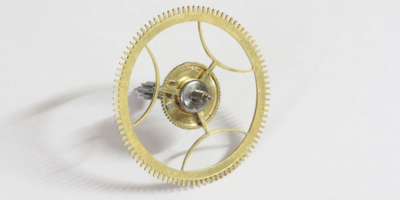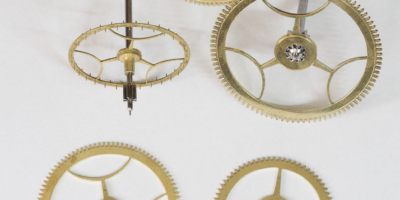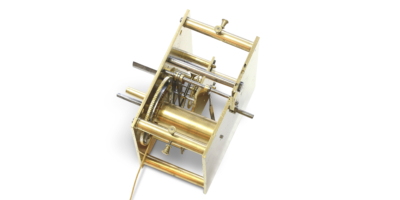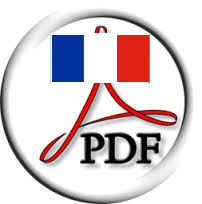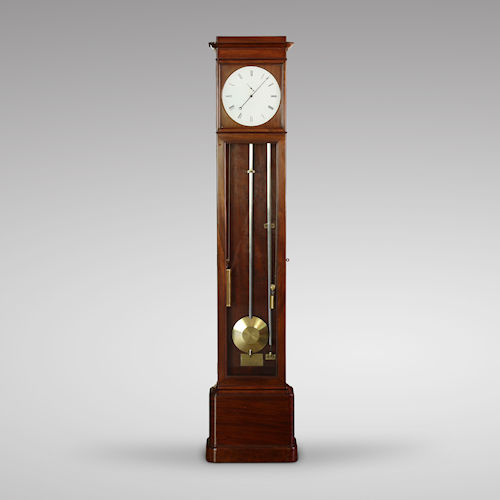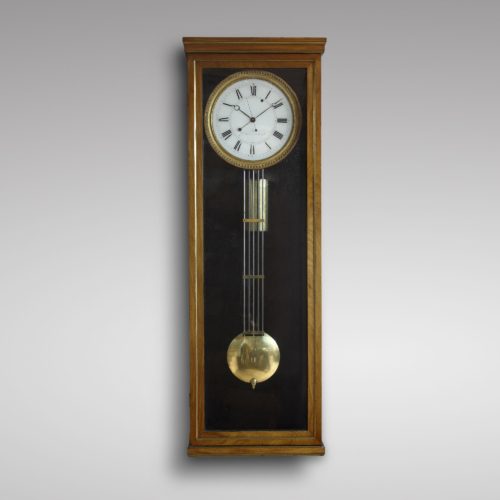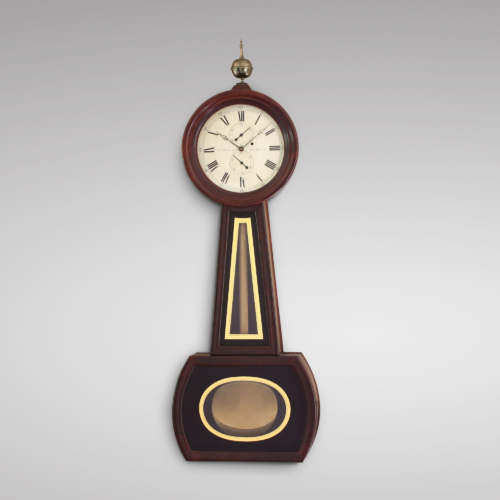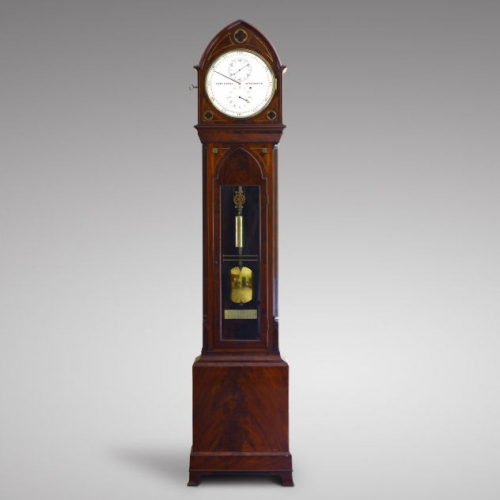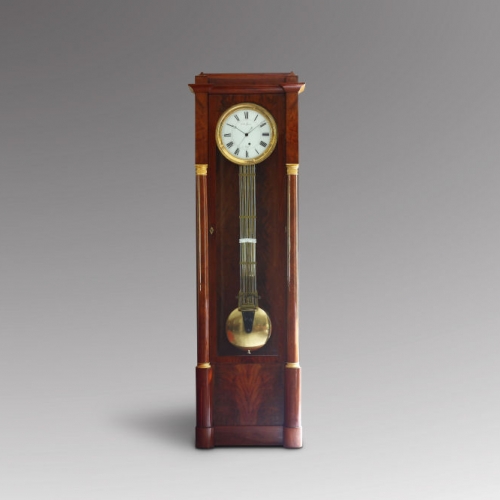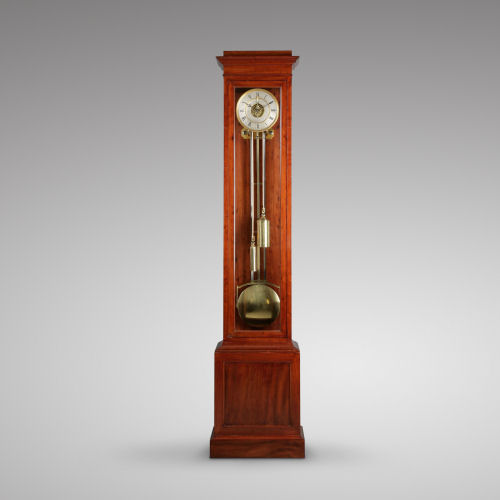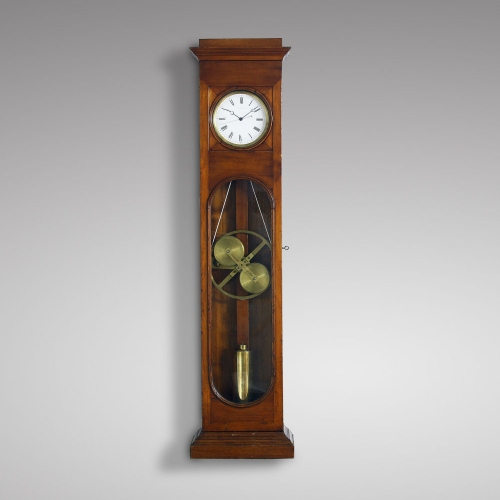Gilles Deherve à Jupille, a Year-Going Precision Wall Regulator, circa 1810. Movement between three plates : the main barrel and the anchor arbor between the front and rear plates, the other wheels between the front and middle plates. Main power through a gut-line with the barrel on one end and a 35 lb (16 kg) weight on the other, with two intermediary pulleys, thus giving a triple-length run. Winding by a crank key, maintaining power on the third wheel. Pinwheel escapement with pins on both sides of the ‘scape wheel. Heavy pendulum bob with graduated adjusting wheel in the centre, grid-iron pendulum with unusual alternate steel and thicker zinc rods. Knife-edge suspension, placed at the front. Large rear-painted glass dial in the Liège fashion, bearing the signature G Deherve à Jupille, with outer graduation for the minutes, Roman numerals for the hours and inner graduation for the centre-sweeping seconds hand. All hands in blued steel. Gilt and carved wood bezel. Large wall walnut case with brass inlays, and glasses on three sides for perfect viewing from all sides. Autonomy 360 days.
Regarding this remarkable regulator, several observations are to be noted:
- The interesting layout of the main pulley with not only the usual winding through the wheel, but also the attachment in the middle, allowing for a triple course of the weight in the case, thus giving an autonomy of 1 year.
- The use of zinc and steel rods for the compensation of the pendulum, with thicker zinc rods for correct calibration. Generally, brass is used.
- The design of the Maintaining Power system on the third wheel is also unique, a simplified and better system than those used in Liège at the time, using a simple steel spring blade and a steel pin.
It is likely that Gilles de Herve had been Hubert Sarton’s pupil, and the following details of our regulator tend to add to this theory:
- Similarity of general way of design for a regulator, such as those made by Sarton’s successors or pupils, such as Dieudonné, Nicolas-Marie Lhoest, and François-Joseph Sarton.
- Typical crossing-out of wheels, as practised in Sarton’s workshop.
- Use of alternate pins on the ‘scape wheel.
- Long duration.
- A shorter seconds hand, making it easier for time setting and reducing the inertia of the ‘scape wheel. (Although that idea was first seen in Robert Robin’s table regulators)
Dimensions
Height 64ʺ (163cm), Width 20½ʺ (52cm), Depth 10ʺ (26cm).
Gilles Deherve
is mentioned in Florent Pholien’s study as being active in Jupille (a village in Liège’s surroundings) during the late 18th C. He is probably the father of Henri Deherve à Herve, another well known local clockmaker.
Bibliography
L'Horlogerie et ses Artistes au Pays de Liége, Florent Pholien 1933; Eddy Fraiture, Belgische Uurwerken en hun Makers, Horloges et Horlogers Belges A-Z, 2009.
Price
on request
